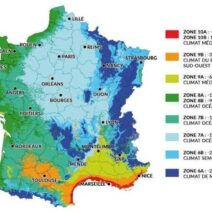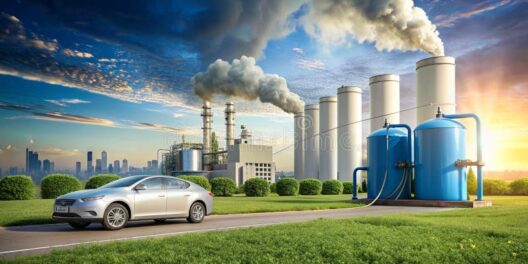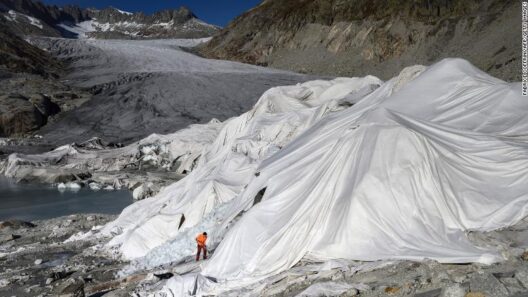Climate, a complex and dynamic system, is influenced by a myriad of factors that can be categorized into natural elements and human activities. The interrelationship between these factors is pivotal to understanding the overarching phenomena that dictate long-term weather patterns and environmental conditions. This discourse aims to elucidate the various influences on climate, meticulously exploring both the natural and anthropogenic components that shape our planet’s climatic identity.
Natural Elements Influencing Climate
Natural influences on climate can be traced back to the Earth’s intrinsic characteristics and processes. Among these elements, the solar radiation emitted by the Sun stands as the most significant driver of climate. Variations in solar output can instigate considerable changes in global temperatures, affecting weather patterns and seasonal cycles. These fluctuations can result from rigorous natural phenomena such as solar cycles, which span 11 years, characterized by a maximum and minimum in solar activity.
Another critical natural factor is the composition of the Earth’s atmosphere. Gases such as carbon dioxide (CO2), methane (CH4), and water vapor play integral roles in the greenhouse effect. They trap heat within the atmosphere, thereby maintaining temperatures conducive to life. Nonetheless, variations in the concentration of these gases, caused by volcanic eruptions or natural decay processes, can lead to substantial climatic fluctuations over millennia.
The hydrosphere, including oceans, lakes, and rivers, significantly modulates climate. The heat capacity of water is considerably higher than that of land, which results in moderated temperature fluctuations in coastal regions compared to inland areas. Ocean currents, driven by wind patterns and the Earth’s rotation, also distribute heat across the globe, contributing to regional climate variations. For instance, the Gulf Stream conveys warm water from the Gulf of Mexico to the North Atlantic, having a profound impact on the climate of Western Europe.
Geological activities, such as plate tectonics, further alter the climate by reshaping the Earth’s surface. The formation of mountains can obstruct prevailing winds, leading to varying precipitation patterns on either side, a phenomenon known as orographic effect. Additionally, landforms influence microclimates—localized climatic variations caused by topographical features. For example, foothills may experience more rainfall than valleys, fostering distinct ecosystems.
Human Activities and Their Climatic Impact
While natural elements undeniably influence climate, anthropogenic activities have emerged as significant contributors, particularly in the context of contemporary climate change. The industrial revolution marked a turning point, signaling an era wherein human activity began to emit greenhouse gases at unprecedented rates. The burning of fossil fuels for energy, transportation, and industrial purposes has markedly elevated CO2 levels, intensifying the greenhouse effect and driving global temperatures higher.
Deforestation is another critical human-induced change that exacerbates climate change. Trees act as carbon sinks, absorbing CO2 from the atmosphere. When forests are cleared for agriculture, urbanization, or logging, this essential carbon storage is diminished, adding more greenhouse gases to the atmosphere. Additionally, land-use change affects local climates, as the replacement of forests with agricultural land can alter local humidity, temperature, and precipitation.
Urbanization represents another significant human impact on climate. Cities create their own microclimates, known as urban heat islands (UHIs), where temperatures may be several degrees higher than surrounding rural areas due to increased heat absorption by buildings and asphalt. This localized warming can influence weather patterns, precipitation, and even exacerbate heatwaves, creating a feedback loop that further strains natural ecosystems.
Furthermore, agricultural practices contribute to climate change. The use of synthetic fertilizers results in nitrous oxide emissions, a potent greenhouse gas. Livestock production is similarly associated with methane emissions, which are produced during enteric fermentation in ruminant animals. Both agricultural practices and livestock farming significantly increase overall greenhouse gas emissions, posing a persistent threat to climate stability.
Natural Variability and Climate Systems
Natural climate variability, such as El Niño and La Niña phenomena, illustrates the intricate, oscillatory nature of climate systems. These events can lead to drastic changes in weather patterns across the globe, impacting agriculture, water supply, and energy use. El Niño, for example, is characterized by warmed ocean temperatures in the central and eastern Pacific, often resulting in heavier rainfall and flooding in certain regions, while causing droughts in others.
Climate systems are also influenced by long-term cycles, such as glacial and interglacial periods. These cycles present evidence of how natural forces can lead to substantial climate shifts over thousands of years. Understanding these cycles is crucial for placing current climate changes within a broader temporal context, particularly as anthropogenic influences have the potential to accelerate natural processes.
Conclusion
In summary, climate is influenced by a complex interplay of natural and human elements. Natural factors such as solar radiation, atmospheric composition, geothermal activities, and oceanic systems provide the foundational climate framework, whereas human activities, especially since the industrial revolution, have introduced disruptions that significantly alter these natural systems. Addressing the challenges posed by climate change necessitates a comprehensive understanding of these influences, driving the need for sustainable practices that strive to mitigate human impacts on the environment, thereby preserving the delicate balance of Earth’s climate for future generations.







